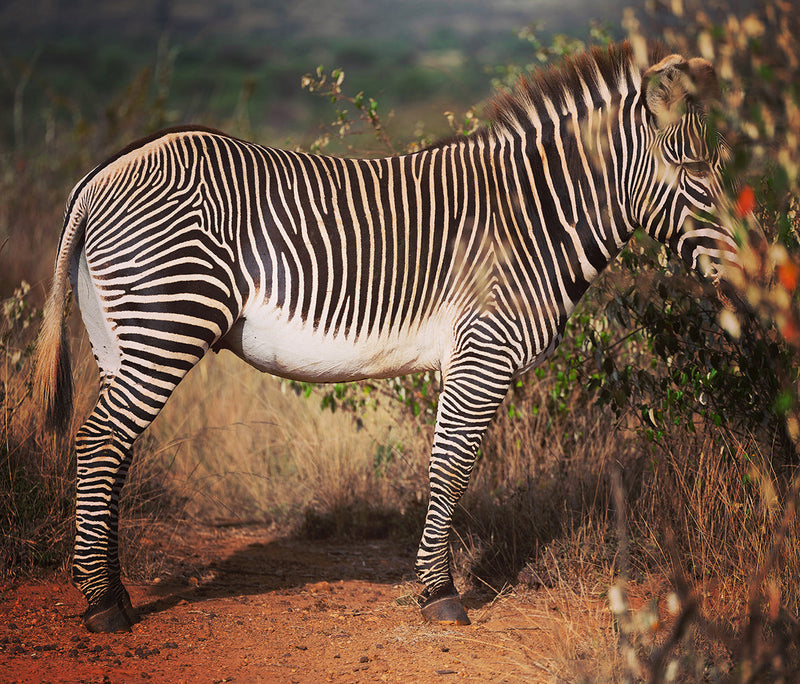
Grévy's zebra, Mpala Research Centre, Laikipia, Kenya
David Chancellor
The Grévy's zebra was used by the Romans in circuses and subsequently forgotten for a thousand years. In the seventeenth century, the king of Shoa (now central Ethiopia) exported two zebras; one to the Sultan of Turkey and another to the Dutch governor of Jakarta. A century later, in 1882, the government of Abyssinia sent one to French president Jules Grévy. It was at that time that the animal was recognised as its own species and named in Grévy's honour. Its population was estimated to be 15,000 in the 1970s and by the early 21st century the population was lower than 3,500, a 75% decline. It is estimated that there are less than 2,500 Grévy's zebras still living in the wild and it’s considered endangered, although stable. It's legally protected in Ethiopia, and in Kenya, it is protected by the hunting ban of 1977. In the past, Grévy's zebras were threatened mainly by hunting for their skins which fetched a high price on the world market. However, the main threat to the zebra now is habitat loss and competition with livestock. Cattle gather around watering holes and the Grévy's zebras are fenced from those areas. Community-based conservation efforts have shown to be the most effective in preserving Grévy's zebras and their habitat as less than 0.5% of the range of the Grévy's zebra is in protected areas. Absolutely every time I see one of these magnificent creatures my heart skips a beat.
The Print
Limited edition hand c-type prints by master printer Brian O’Leary, are printed to order in the following sizes and editions.
Each print is signed, dated and numbered by David on the front. Certificates of authenticity are provided and come affixed to the back of the frame, or included with the print if shipped unframed.